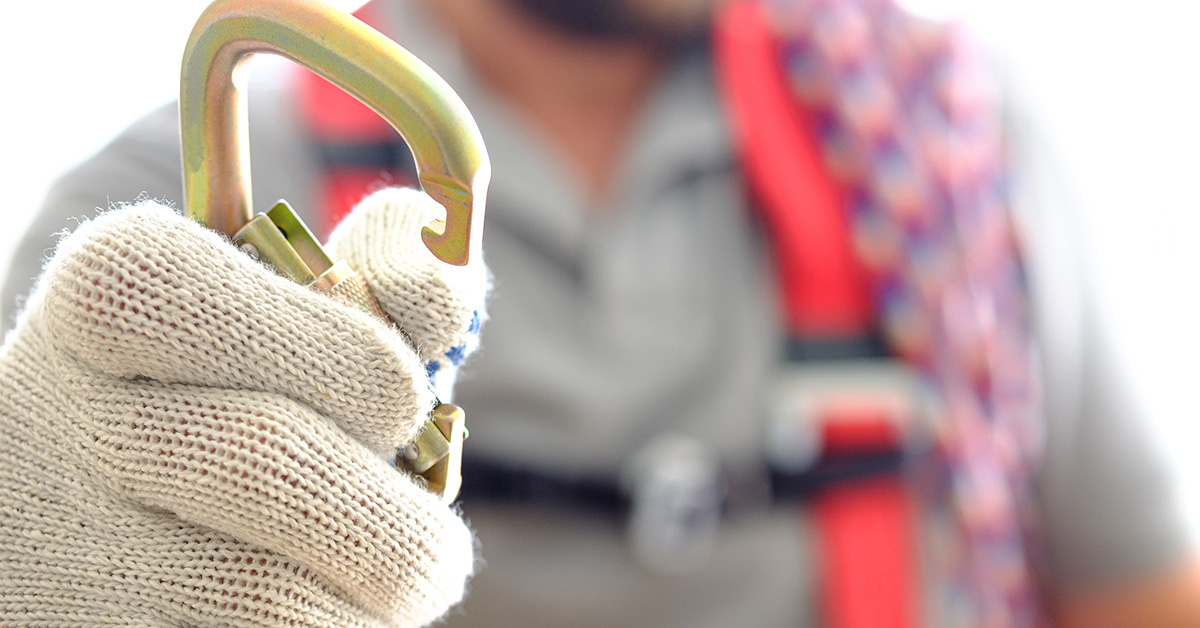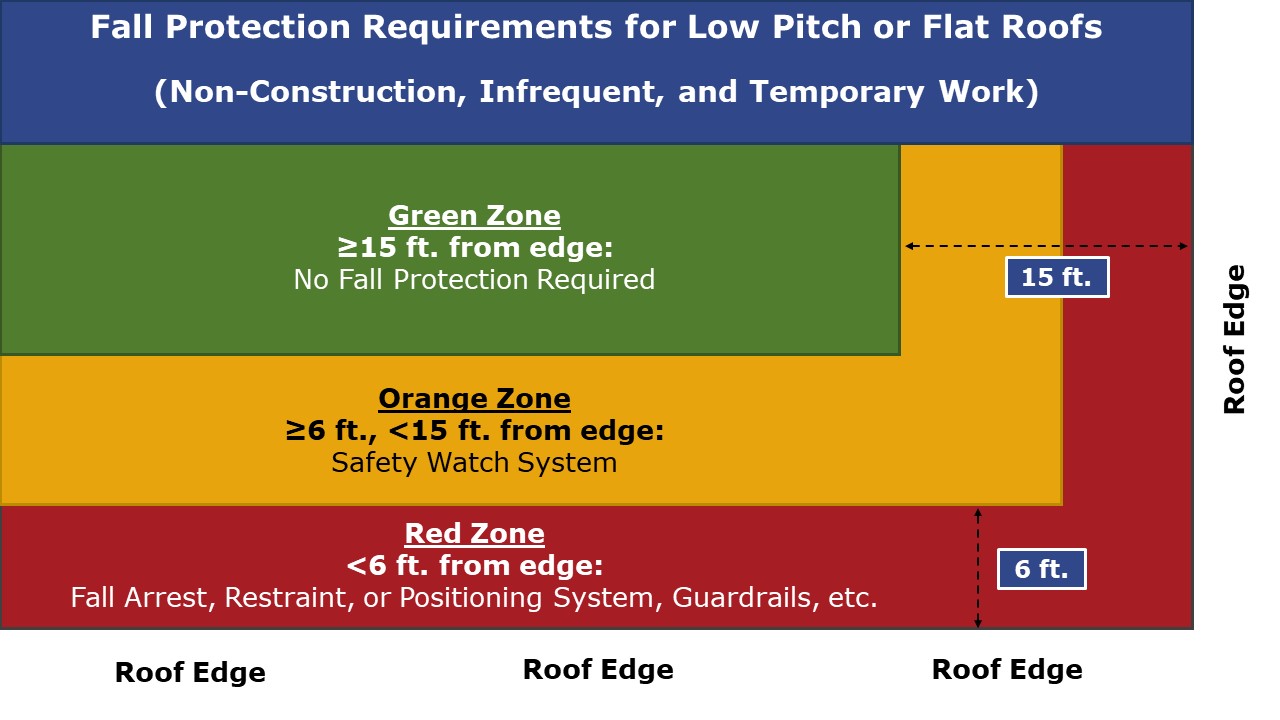OSHA 300 Recordkeeping: Common Questions and 2024 Changes to Electronic Submissions
The Occupational Safety and Health Administration (OSHA) requires many organizations with 11 or more employees to follow recordkeeping requirements,...
5 min read
 Archbright Team Member
:
Nov 17, 2022 11:07:17 AM
Archbright Team Member
:
Nov 17, 2022 11:07:17 AM

Do your employees work from heights in the state of Washington? If so, you may need to brush up on the Washington Labor and Industries’ (L&I) updated Unified Fall Protection rule, WAC 296-880. L&I’s Division of Occupational Safety and Health (DOSH) updated the Unified Fall Protection rule because they received notification from the federal Occupational Safety and Health Administration (OSHA) that Washington’s rule was not “at least as effective” as the federal fall protection standards. For state agencies such as L&I to maintain state-run safety programs, they must meet or exceed federal standards. DOSH’s updates to the Washington rule became effective on November 1, 2022.
While the revisions are not as far-reaching as those that employers might remember from 2020, when several of DOSH’s fall protection-related rules were combined to create the original Unified Fall Protection standard, some significant changes will affect many employers.
One change that will have an impact across industries is the new fall protection requirement related to non-construction work on low-pitched roofs. Employees who perform infrequent and temporary tasks like equipment troubleshooting on low-pitched roofs now have different options for fall protection depending on the distance that employees can maintain from roof edges.
While the existing rules were evident that a robust fall protection system is required for work within six feet of the roof edge, they were less clear about work that takes place farther away from the roof’s edge. The latest updates have clarified two points on DOSH’s stance on work distances:
DOSH reworded the second point to clarify the kinds of work that would be covered by this exception and to explicitly exclude construction-related work. There is also updated language to explain how the safety watch system works, which is covered later in this article.
The following diagram illustrates the rules as of November 1:

Employers may be wondering what infrequent or temporary work is. According to DOSH, “Infrequent” means that the job or task is only performed occasionally. For example, fixing a piece of broken equipment would be considered infrequent work. Interestingly, OSHA has provided a more lenient interpretation of the term, stating that tasks that occur monthly, yearly, or just at irregular intervals meet the definition of “infrequent.” DOSH has not yet made it clear that they agree with this interpretation.
DOSH’s definition of “Temporary” is vague as well — “The duration of the task […] is brief or short.” But what constitutes “brief” or “short”? Once again, OSHA has provided their interpretation of “temporary,” stating that if the task takes less time to complete than installing or erecting fall protection, it qualifies as temporary work. However, DOSH has not yet confirmed that they agree with this interpretation either.
It is important to note that these rules reflect only the regulatory minimum fall protection requirements. Employers may always choose to use more extensive fall protection in any situation where employees are exposed to falls from height. In fact, Archbright recommends performing a comprehensive risk assessment for all fall exposure situations to help determine appropriate protection measures that best protect employees from falls.
A risk assessment will help employers formally gauge the hazards based on each situation’s unique factors, such as the nature of the work and all the dangers within the roof environment. Other considerations include how close and often the job or task takes employees to the roof edge and how long they spend near it. Suppose a task occurs between six and 15 feet of the roof’s edge and is rated as “low risk,” maybe because it will only take a few minutes to complete. In that case, it might be appropriate to consider a safety watch system instead of a full-scale protection measure. A higher-risk task, such as one that takes longer or involves one or more environmental hazards, like slippery surfaces, might necessitate a more comprehensive fall protection system like fall restraint.
Another factor to consider when deciding what approach to take for rooftop work is the individual risk tolerance of the employer. Is allowing employees to perform the work without more robust types of fall protection (like fall arrest or restraint) worth the risk of being cited by a compliance officer for failing to meet L&I’s vague definition of “temporary and infrequent” work? If the answer is “No,” then mandating active fall arrest for all situations may be the best approach.
On the other hand, if the answer to this question is “Yes,” and employees will perform a job or task under the minimum rules, then it is recommended that the employer take a conservative approach to the risk, including the following:
Thankfully, the rest of DOSH’s changes to the Unified Fall Protection Rule are more straightforward, including changes to the required safety watch systems. As already discussed, a safety watch system can be used on low-pitch roofs during non-construction work when the task is infrequent and temporary and takes place at least six feet from the edge. A safety watch system involves one appointed employee watching another employee perform work and warning them if they breach this distance. The watcher must be designated as a “competent person,” meaning they are knowledgeable about fall protection, can recognize fall hazards, have the authority to intervene, and more. They must also maintain a clear view of the worker and be able to be heard above any environmental noise.
The rule previously stipulated that a safety watch could be used during “repair work or servicing equipment.” There was concern from OSHA that the inclusion of terms like “repair” or “servicing” would lead employers to believe that the safety watch system was actually allowed for certain construction work. However, the intent was that it was only used during non-construction activities. In response, DOSH updated the rule to explicitly state that the use of a safety watch system is for work “other than construction work.” (DOSH’s definition of “construction work” can be found here.)
Additionally, the rule was further clarified to state that only two people can be involved in a safety watch system — the person performing the work and the watcher. If additional workers are needed, the employer must appoint an equal number of competent watchers.
The final changes to the Unified Fall Protection rule were related to “trigger heights,” or the height at which employees must use a fall protection device or system, whether it’s a guard rail, safety watch, or fall restraint or arrest system.
Many employers covered by the general industry rules are familiar with the requirement to provide fall protection on walking/working surfaces if they are four feet or higher. Still, this rule has many exceptions, depending on the nature of the work. DOSH published a helpful list of trigger heights in the Unified Fall Protection Standard that can be found here. In the most recent rulemaking, trigger heights have been lowered, meaning that requirements kick in sooner:
|
Activity |
Old Trigger Height |
New Trigger Height |
|
Roofing work on low-pitched roofs |
10 ft. |
6 ft. |
|
Construction of a leading edge |
10 ft. |
6 ft. |
|
Working at unprotected elevated locations in ski facilities |
> 10 ft. |
≥ 4 ft. |
The rules for fall protection are comprehensive and depend on employer activity, making it easy for employers to get confused about what applies to them. Sometimes, it may seem like the terms and definitions that employers must base their decisions on are unclear or contradictory.
Archbright can help!
Eligible Archbright members can find several Fall Protection resources in the mozzo Resource Library, including the Fall Protection Washington Quickstart and sample Fall Protection Plans. In addition, employers with questions or who need support with the updated Unified Fall Protection rule can utilize the Safety Hotline or contact a Safety Consultant via the mozzo chat feature. Employers who are interested in membership can email info@Archbright.com.
.jpg)
The Occupational Safety and Health Administration (OSHA) requires many organizations with 11 or more employees to follow recordkeeping requirements,...

Nestled in the Pacific Northwest, Washington State is known for its temperate climate. However, that doesn’t mean the region doesn’t experience hot...
.jpg)
NASA's Goddard Institute for Space Studies (GISS) scientists reported that July 2023 was the hottest month on record globally. Unfortunately, experts...